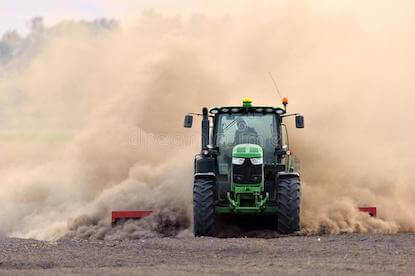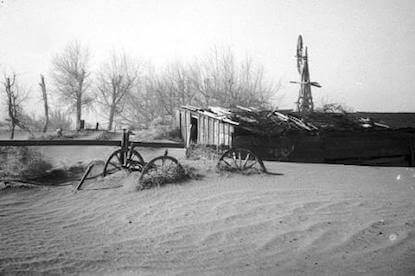Food production depends on soil quality and without sustainable farming, soil is disappearing 40 times faster than it can be replaced.
Food Production starts with the soil. In fact, our food quality is a direct reflection of the condition of our soil. The more nutrients in our soil, the more nutrients in our food and since the 1950’s and the introduction of mechanized agriculture with its man-made fertilizers and sophisticated irrigation equipment, soil quality has decreased steadily and unfortunately so has the quality of our food.
Although there was an immediate boon to the world's food growing capabilities thanks to these new farming methods, it came at great expense. As food supplies rose and we were able to feed more people, the soil was shifting from below our feet. Since the 1970’s thousands of acres of productive farmland has disappeared severely affecting global food production.
Agricultural experts believe that we have just 50 years of good soil left until current farming practices deplete all of the life giving nutrients from the soil, planet wide. Unless drastic measures are taken and soon, our children and our children’s children could witness a disaster of biblical proportions.
Soil Disappearing Faster Than We Can Replace It



Unsustainable farming practices are currently stripping nutrient laden topsoil at rate that is 40 times faster than it can be replenished. Before the advent of mechanized agriculture, crops were routinely rotated to preserve soil quality using sustainable farming methods. Crops were planted one season that would be of benefit to another the following season. It was common practice with sustainable farming to leave a field fallow for a year or two, left to grow in native and natural grasses. Animals would be allowed to graze, replenishing the land with manures. Historians have discovered that the largest harvests of wheat occurred from the first few plantings by the new settlers on the Prairies who practiced sustainable farming on these Great Plains where buffalo had previously roamed. Grain from the plains turned Middle America and the grass lands of Canada into the “breadbasket” of the world. Unfortunately, these harvests only lasted a few decades as the land became tired from over cropping and the result was The Dust Bowl of the 1930’s.
Not much has changed as population pressures in many countries force farmers to grow on land until it just won’t grow any more – not even weeds. This is not good news when you consider the finite amount of available land that is capable of producing crops. It takes years to replenish depleted soils. In fact, soil making processes are extremely slow, requiring anywhere from 300 to 600 years to create 3 inches of topsoil depending on geographic location.
Sustainable Farming Practices Protect Soil
Farmland is degraded in many other ways other than not employing sustainable farming practices. Overhead irrigation, particularly pivot irrigation systems are not only depleting the planets aquifers but are leaching nutrients from the soil. The overuse of modern irrigation methods in many cases leads to salinization, in which salt levels build up in the soil to the point where nothing will grow at all. Nearly 25% of all irrigated farmland will be threatened with this issue within the next 15 to 20 years.
Once soils are exposed, the wind can strip as much as 1-inch of topsoil in a day! Where farmland is left fallow it loses no soil at all. Many of the chemicals sprayed on crops to kill pests and protect plants from viruses can kill beneficial soil organisms that help soils regenerate.
Sustainable Farming, Soil And Crop Circles, Crop Circle Farming
A new technology developed by New Leaf Technologies saves this precious resource and builds new soil year after year. Instead of using large tracts of open land to grow food, Crop Circles use spot applications of nutrients to feed plants. Crop Circle farming is more efficient and significantly more productive per acre.